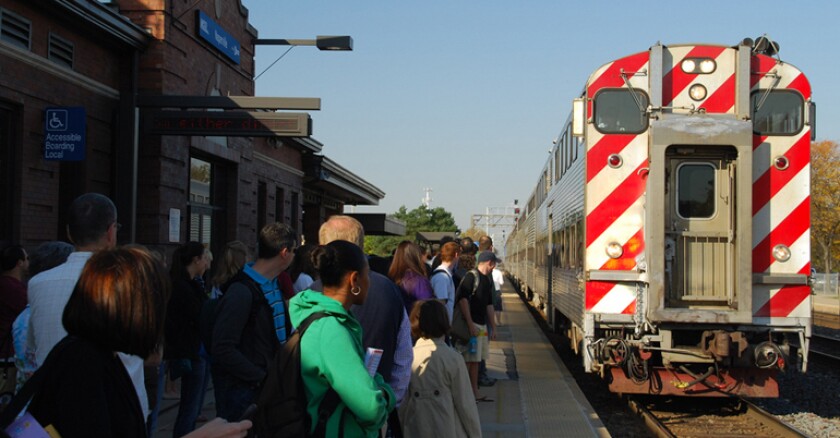Federal lawmakers gave the railroads three more years to install "positive train control," a computer and GPS-enabled automatic braking system designed to prevent train collisions and derailments. The railroads now have until the end of 2018, rather than 2015, with possible extensions for two years beyond that, to get the systems up and running.
Safety experts say the safety systems could prevent accidents like the Philadelphia derailment of an Amtrak train that killed eight people in May. In fact, Congress first passed the requirement months after a 2008 collision in the Los Angeles area killed 25 people.
But railroads argued that the deadline was unrealistically early for such an ambitious undertaking. The extension from Congress is a major relief for both freight haulers and passenger railroads. Commuter railroads, which shuttle passengers between city centers and their suburbs, had feared they would not be able to operate at all come January.
Michael Melaniphy, president and CEO of the American Public Transportation Association, which represents transit agencies, said the extension "avoids the risk of an economic crisis" that would have occurred if the railroads were forced to shut down.
"By implementing a realistic timeline," he said in a statement, "the disruption of Americans who take nearly 2 million daily trips on commuter rail systems every weekday was avoided. This extension prevents the shifting of these daily commuter rail trips onto overburdened roads."
The congressional action on positive train control came as part of a larger transportation package to keep federal money flowing to states for another three weeks, through Nov. 20. President Barack Obama is expected to sign the measure.
If Congress hadn't extended the deadline, the railroads were threatening to stop running come January to avoid the massive fines that they would get for operating without positive train control.
One reason commuter rail agencies were not on pace to meet the 2015 deadline is that they, for the most part, cannot install positive train control on their own. They usually run their trains on tracks owned by freight railroads. That means the equipment on passenger trains has to work with the freight carrier's equipment. It also means, usually, that it's up to the freight railroad to install the wayside devices.

Using a simulator, a trainer demonstrates Metrolink’s positive train control system. (Emile Wamsteker)
Edward Hamberger, president and CEO of the Association of American Railroads, which represents freight railroads, said the companies have installed positive train control on 12,000 miles of track so far, but they have another 70,000 miles to go. Freight railroads also have to install devices on another 22,000 locomotives and erect another 32,000 signal towers to make the system work nationwide. The upgrades will cost another $4 billion, he said, on top of the $6 billion the railroads have spent already.
"We want to get it done. It's like having a home halfway built. You want to finish it, you want to move in. It's not for lack of trying, but we're not going to make the 2015 deadline," he said.
But some are convinced the railroads are behind because they never took the deadline seriously in the first place. "Some of the railroads are dragging their feet," U.S. Sen. Barbara Boxer, a California Democrat, said Wednesday. "They have every excuse in the book."
U.S. Sen. Diane Feinstein, also a California Democrat who pushed for the safety reform with Boxer, previously said extending the requirement would be "extremely reckless policy." Feinstein pointed to the progress of Metrolink, the Los Angeles commuter rail system that operated the passenger train in the 2008 Chatsworth accident that inspired the federal law. Metrolink pioneered the technology and is now on course to meet the 2015 deadline.
Railroads warned that, had Congress waited until the last minute to extend the deadline, customers could still have faced days or weeks without service. That's because it can take a while to shut down or start up service: Commuter railroads, for instance, would have to make sure that they still have slots on freight rail schedules. Even getting fuel delivered could be a challenge, if a commuter rail cancels its orders and then decides it needs them again.









